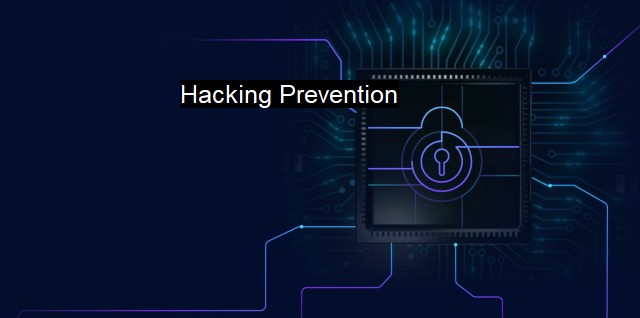What is Hacking Prevention?
Hacking Prevention: Protecting Computer Networks and Data from Malicious Attacks Using Antivirus and Other Cybersecurity Tools and Techniques
Hacking Prevention measures refer to how individuals, businesses, and organizations protect their computer systems and networks from being exploited or accessed unauthorizedly by potential hackers. As technology advances and our reliance on it strengthens, the cybersecurity risks too elevate and complexify. Thus, understanding hacking prevention becomes nuanced and is of utmost importance in maintaining integrity, confidentiality, and accessibility of one’s data.Cybersecurity typically encompasses activities such as protecting computer systems including hardware, software, data, networks and even electronic data from unauthorized access, use, disclosure, disruption, or seizure. Its core function lies in guarding these systems from cyber threats such as hackers, cyber criminals, terrorists, and espionage actions. The understanding of cybersecurity thus becomes instrumental to begin appreciating hacking prevention.
For starters, individuals or businesses can adopt a gamut of measures as a part of hacking prevention strategies. These often involve using system utilities and settings to harden computers against potential attack vectors. Password policy enforcement is a great example here. To avoid easy-to-crack passwords, demanding unique mixes of alphabets, symbols, and numbers can render them unbreachable. Other simple, ongoing measures include software update policies ensuring that the system's security patches received as upgrades from software makers get applied regularly.
When prevention measures delve into serious arsenal, it speaks of antivirus software. This software essentially works to detect, block and remove malware from a computer system. They are active round the clock, proactively detecting suspicious activities, scanning for known viruses, and preventing intrusion attempts by hackers. Advanced machines simultaneously manage programs forming defense lines. Firewalls intended to shield a computer or network against external intrusion stand as one of these defense lines. They monitor and direct incoming and outgoing traffic and block traffic deemed as potentially dangerous.
Faced with evolved hacking capabilities that constantly discover new malware strains, standalone antivirus protections might be insufficient. Thus, adopting comprehensive cybersecurity suites incorporating various features becomes incumbent. For instance, these might include spyware detection, ransomware protection, firewalls, virtual private network (VPN), password management, email protection, etc. Some provide even identity theft protection.
A unique cybersecurity facet illuminated recently is conceptuating human firewall. Irrespective of all technological measures deployed, the functionality boils down to individual cyber habits of system users often acting as the first line of defense. Enabled by regular employee cybersecurity training, this easily tackles social engineering strategies that trick individuals or even entire organizations into revealing sensitive information.
Regular backup of essential data also goes a long way towards hacking prevention. The backup could be performed onto a separate system or onto cloud storage. This multipronged strategy not only ensures integrity but also assists in restoring systems amid data losses.
Hacking prevention thus comprises varying dynamics that an individual, business or any organization must consider. The implementation should seep into everything from routine processes to major strategies. The nail in the coffin would be to remember that the digital realm's landscape is continuously shifting with technologies newer than new coming into play. Hence, adequate measures should be continually assessed, evaluated, and altered commensurate with shifting landscapes. Cybersecurity, and by extension hacking prevention, ironically turns out to be a sustained race against time; to keep systems safe as new vulnerabilities surface every other day. In this frame, cybersecurity becomes not an option but a necessity.
Not disregarding that data breaches could potentially trigger devastating consequences. Remember the adage that prevention is better than cure? Well, when we speak of hacking prevention, the adage morphs into prevention is the only cure. Here’s echoing that in the matter of hacking prevention, we shift narrative to vetting frequently, updating regularly, educating always, and preventing undoubtedly. hacking prevention would no longer remain an alien term but rather something that is embedded in every aspect of our digital lives. Therefore, impregnating sound cybersecurity measures becomes not just significant, but inevitable to grapple with the specter of hacking attempts.

Hacking Prevention FAQs
What is hacking prevention?
Hacking prevention refers to measures and tactics put in place to prevent unauthorized access, exploitation, or manipulation of computer systems, networks, or data. The main aim of hacking prevention is to ensure the confidentiality, availability, and integrity of digital information.What are some common hacking prevention strategies?
Some common hacking prevention strategies include implementing strong passwords, using two-factor authentication, keeping software and security tools up-to-date, limiting access to sensitive information, using firewalls and virus protection software, and conducting regular security audits.Why is hacking prevention important?
Hacking prevention is essential for protecting the sensitive and personal data of individuals, businesses, and organizations. These days, cybercriminals are becoming more sophisticated and using advanced techniques to gain unauthorized access to digital systems and networks. Organized hacking attempts can cause significant data loss, financial damage, and reputational harm.What are the consequences of not implementing hacking prevention measures?
Failure to implement hacking prevention measures can lead to severe consequences, including data breaches, financial loss, reputation damage, legal liabilities, and loss of business opportunities. Additionally, organizations that fail to keep up with the latest hacking prevention practices and tools may be seen as being negligent or non-compliant with regulatory requirements.| | A | | | B | | | C | | | D | | | E | | | F | | | G | | | H | | | I | | | J | | | K | | | L | | | M | |
| | N | | | O | | | P | | | Q | | | R | | | S | | | T | | | U | | | V | | | W | | | X | | | Y | | | Z | |
| | 1 | | | 2 | | | 3 | | | 4 | | | 7 | | | 8 | | |||||||